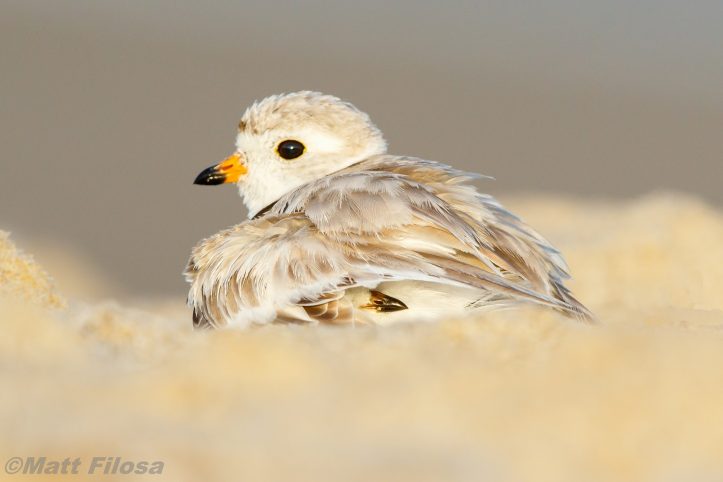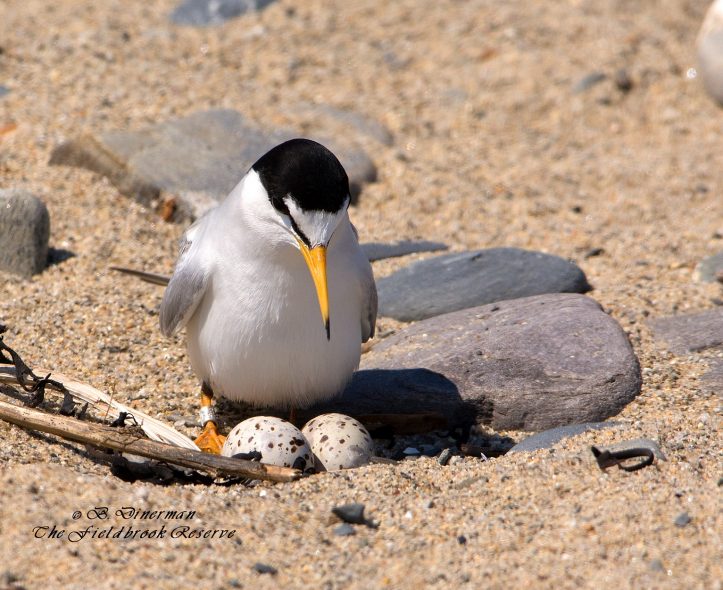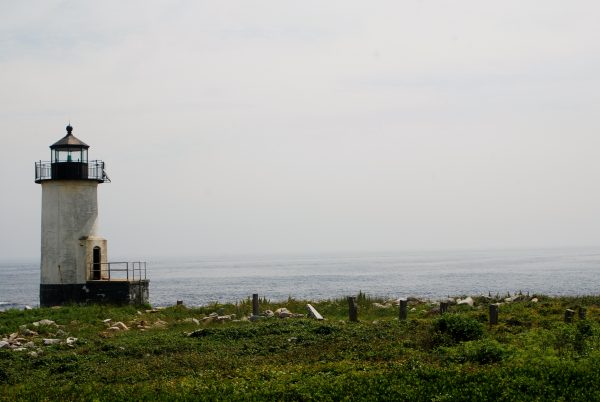Colonial-nesting waterbirds are always fascinating, and because so many species nest on remote or hard-to-get-to islands, a visit to a colony typically represents an adventure. And so it was when six intrepid staff members and volunteer bird counters visited Mass Audubon’s Kettle Island (a Massachusetts Important Bird Area) off the coast of Manchester-by-the-Sea last week. A 17 acre uninhabited rocky island approximately a mile offshore, much of the island is vegetated with a dense cover of low trees, shrubs, thorns, and copious amounts of poison ivy. One can view the island’s birdlife from a boat, but landing is prohibited in order not to disturb this important colonial waterbird nesting site.

Kettle Island bird team ©Craig Gibson
The purpose of the island visit was to census and survey the breeding long-legged wading birds that have nested on the island for several decades. The visit was part of a survey project initiated last year to assess the overall status and ecology of a number of islands off the Essex County coast, and also part of a greater coastal waterbird survey being jointly conducted by the U.S. Fish & Wildlife Service and Mass Wildlife. One of the largest colonies in the Commonwealth, Kettle Island currently hosts Great Egrets (194 pairs), Snowy Egrets (99 pairs), Little Blue Herons (4 pairs), Black-crowned Night-Herons (30 pairs), and Glossy Ibises (9 pairs). In addition, the island sanctuary is currently home to 2 pairs of American Oystercatchers, 51 pairs of Herring Gulls, and 79 pairs of Great Black-backed Gulls.
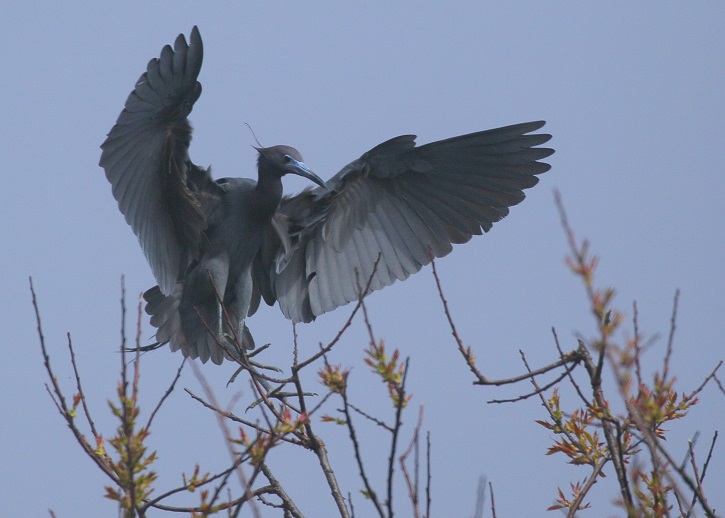
Little Blue Heron ©Craig Gibson
One of the magical aspects of visiting a breeding island at this season is seeing some of our most spectacular breeding species in their full breeding plumage—plumages that brought many species virtually to their knees in the heyday of the millinery trade during the late 1800s and early 1900s when their feathery filigree was central to the egregious fashion industry of the day. Not only did the excesses of this worldwide feather lust bring the founding mothers of Mass Audubon to rise up in outrage in 1896, but it was this same excessive slaughter of egrets, herons, and other birds that ultimately led to the establishment of the Migratory Bird Treaty Act 100 years ago this year.
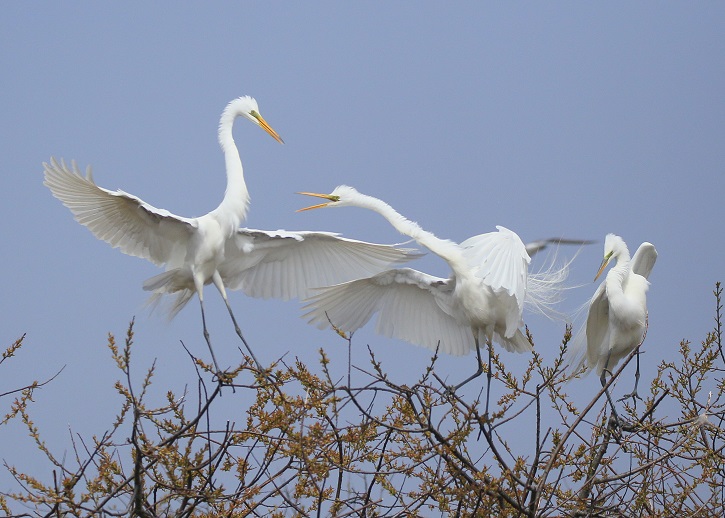
Great Egrets ©Craig Gibson
Thanks to these two historic conservation milestones, today bird watchers, photographers, artists, and everyone who enjoys beautiful living things is able to see these handsome species seasonally inhabiting the coastlines and salt marshes of Massachusetts when they are not nesting on their remote island colonies.

Great Egret chicks ©Craig Gibson


